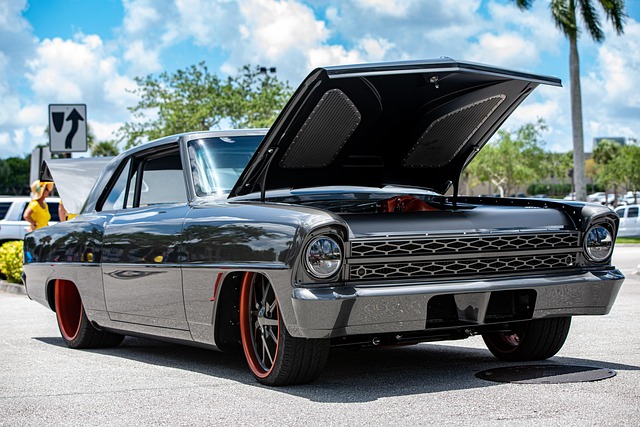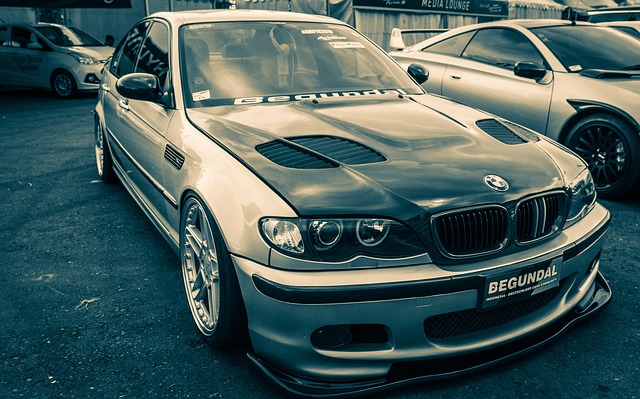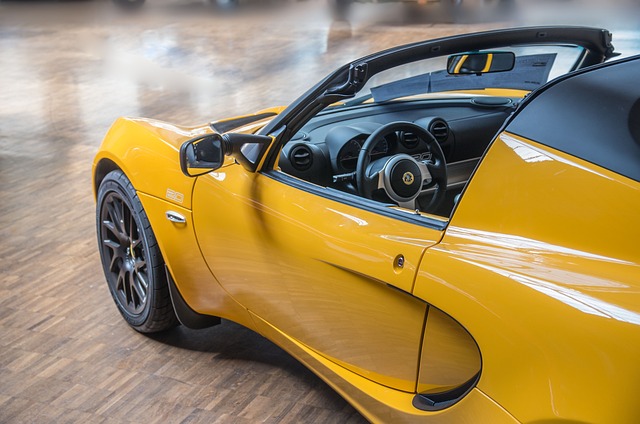Performance mods provide a car with additional speed, grip, and handling. Cosmetic mods transform the appearance of a car, add flair, and demonstrate a driver’s style. Readers want to know which kind of mod is better for their car. Others are obsessed with blistering fast laps or knife-like cornering, and they’ll drop dollars on new tires, suspensions, or even engine upgrades. Others crave a car that turns heads, so opt for fresh paint, wheels, or lights. They both have their fans in the car world. To aid in choosing what suits best, it’s useful to understand what each type mod can achieve and what’s important to you. The following sections contrast these mods by cost, effort, and real-world effect for car owners.
Key Takeaways
- Car owners who grasp the distinction between performance and cosmetic mods can then make smart decisions that fit their objectives, whether that’s pure performance or vanity.
- Performance mods like turbochargers, suspension, and brakes can provide quantifiable gains in speed, handling, and safety, but usually come with higher costs and maintenance.
- Cosmetic mods like body kits, paint, and wheels give you an outlet for self-expression and look cool without changing the car’s performance. Their practical value is minimal for daily driving.
- Legal compliance, insurance issues and potential impact on manufacturer warranty should all be looked at closely before any modification to avoid any surprise expenses or headaches.
- Pairing performance with style by way of functional aesthetics—think aerodynamic add-ons—can provide you with a car that handles better and looks good while doing so. It needs to be well-conceived.
- Determining whether your main goal for modding your car is to be efficient for daily drives, fun for the weekend, or for show cars will help steer your decisions and keep the mods aligned with your lifestyle and expectations.
Defining the Divide
Car modifications fall into two broad camps: those that aim to change how a car works, and those that change how a car looks. Performance mods target upgrades that make your car faster, handle better, or stop more safely. Cosmetic mods, meanwhile, are about making your car pop in a crowd without altering its drive. Either kind of modification is a way for owners to express themselves, like choosing the perfect outfit for a special occasion.
The “Go”
Performance modifications are applied to increase a car’s power and enhance its automotive performance. Pumping up horsepower and torque is typically the objective, with parts such as turbochargers and superchargers being common selections. These systems shove more air into your engine, aiding it in burning fuel more efficiently and powerfully. The final result is a faster, more responsive car, but it can stress engine components.
The other major presence is suspension. An upgraded spring, shock, or sway bar can help a car stick to the road better, particularly when you’re blasting around corners. These mods tend to be a happy compromise between ride comfort and a little crisper handling, but certain setups can be a lot stiffer than stock. Brake upgrades, like bigger discs or performance pads, provide more aggressive stopping power and can reduce stopping distances—a huge bonus for safety. Any significant modification to wheels or tires can necessitate spacers or recalibrating electronic safety systems so they fit and operate correctly.
The “Show”
Cosmetic mods are for people who want their car to express themselves. Favorites are body kits, paint, vinyl wraps and custom lighting. Switching from factory wheels to aftermarket or upgrading your headlights can make your car look more modern or aggressive.
With the diversity of visual mods allows owners to craft an aesthetic that’s all their own. For some that’s loud colors and accent trim, for others it’s subtle changes that keep the lines of the car pristine. Occasionally, cosmetic mods go hand in hand with performance upgrades for a streamlined, cohesive look. Not all visible changes enhance operation. In fact, some can even be safety or legal issues like tinting your lights.
Performance vs. Cosmetic Mods
Car mods fall into two broad groups: performance and cosmetic. Performance mods look to increase driving power, handling, or efficiency while cosmetic mods are all about how your vehicle looks or feels to own. Each type, however, carves the driving and ownership experience in its own way. The table below compares the key advantages.
|
Benefit Type |
Performance Mods |
Cosmetic Mods |
|
Function |
Faster speed, sharper handling, better grip |
Improved appearance, unique style |
|
Driving Impact |
Measurable gains in acceleration, braking |
Enhanced visual enjoyment |
|
Daily Use |
Can improve or reduce comfort |
Usually neutral or minor impact |
|
Maintenance |
Often needs more checks, upkeep |
Minimal added maintenance |
|
Resale Value |
Mixed impact, may lower resale |
Attracts niche buyers |
Driving Feel
Performance mods such as sport tires, a stiffer suspension, or better brakes alter what it feels like to drive a car. These mods make the car stickier in the corners and stop quicker. For lap time junkies or spirited drivers, the difference is unambiguous and measurable. Cosmetic mods like new paint, body kits, or custom wheels make the car pop or suit the owner’s style, but don’t alter its driving character. Love, love, LOVE this topic… Some owners feel just a little prouder or happier behind the wheel with a visual upgrade – even if nothing else changed! What matters most comes down to what the driver cares about: raw performance or personal style. Both types can make a car feel more special and intensify the owner-machine connection.
Daily Use
Performance vs. Cosmetic Mods
Performance mods can make your daily driving more fun or safer (better tires for wet roads for example). They can roughen the ride if the suspension is too firm. Cosmetic mods, on the other hand, primarily alter the car’s day-to-day appearance. They seldom contribute comfort or utility. If you drive a lot, comfort and ease matter—soft seats or quiet exhausts may trump looks or speed. For fun weekend drivers, more extreme mods — performance or cosmetic — can make sense.
Resale Value
Performance mods tend to reduce resale value, as buyers might be concerned about their prior hard driving or reliability. Cosmetic mods can occasionally aid resale if they match buyers tastes – flash colors or rare body kits can be attractive to some. Both kinds of mods can accelerate depreciation. Maintaining notes on every mod will help you sell later on, by demonstrating pride in and quality of work.
Total Cost
Performance mods such as brakes, suspension, or engine components do cost more and require expertise to install. Cosmetic things can be cheap stickers all the way up to expensive paint jobs or wheels. Neither consistently provides value over expense. A lot of people assume cosmetic mods are invariably less expensive, but some fancy paint or wheels can cost just as much as a new turbo kit.
Maintenance
Performance parts require more maintenance—upgraded brakes wear quickly, tuned engines demand extra attention. Cosmetic mods typically require less, however wide wheels or body kits can require fixes. Being aware of maintenance requirements saves surprises. Some performance parts at the nicer end of the spectrum, such as improved cooling, can even extend the life of the car.

The Unseen Consequences
Car mods can affect more than just the way a car looks or drives. Both performance and cosmetic mods can have further implications for legality, insurance, and warranties. Local laws, costs, and personal attachment all go into whether modifications will be a good fit for each owner.
Legality
Performance mods, particularly those that alter the engine or exhaust, are subject to stringent emissions regulations in numerous jurisdictions. For instance, some areas have strict regulations which prescribe specific engine or exhaust modifications if they cause additional pollution. Noncompliance with these rules can lead to fines or even render the car illegal to operate. Safety standards can be a problem. Replacing brakes or suspension without consent might render the car unroadworthy. Cosmetic mods, such as window tints or non-standard lights, can break laws if they impede visibility or distract other drivers. Neon underglow on a car, for instance, would certainly fail inspection in areas where they’re prohibited. Of course, always be sure to check local laws before beginning any mod.
Checklist for Legal Compliance:
- Check your local and national emissions standards prior to any engine or exhaust modifications.
- Check for safety compliance for structural or performance parts, like brakes, suspension or lighting.
- Ensure that cosmetic mods—wheels, lights, tints—adhere to visibility and safety regulations.
- Verify inspection criteria and consult local officials concerning particular modifications.
Insurance
Performance mods usually translate to increased insurance rates. They can increase the likelihood of accidents or theft, so insurers can increase rates or deny coverage. Some insurers may even refuse claims if mods were not declared in advance. Cosmetic mods tend to add minimal value unless they cause the car to draw attention to thieves or impact its worth. Either way, it’s key to inform your insurer of every change, even if it seems insignificant. Every company treats mods differently, a few have dedicated policies for custom cars, which can provide owners superior coverage.
Premiums may increase if mods impact the vehicle’s safety or dependability. Owners should, in any case, always verify with their insurer how they handle modified cars before undertaking any changes.
Warranty
Performance mods can void a manufacturer’s warranty, which means those future repairs might not be covered. This is a huge hazard for new cars. Cosmetic mods, like new paint or custom seats, almost never impact warranties unless they actually damage essential components. As always, read the warranty terms. A few aftermarket vendors do provide fresh coverage for customized vehicles, but these tend to be pricier and sometimes don’t cover as much as the original warranty does. A voided warranty can translate into higher repair bills and surprise expenses.
When Both Worlds Collide
Mixing performance and cosmetic mods isn’t simply about selecting pieces for velocity or vava-va-voom. A few alterations can enhance the performance and aesthetics of an automobile. These are what I call functional aesthetics—where form follows function and fashion is more than just conspicuous. Selecting the optimal blend translates into improved performance and appearance, and meticulous preparation allows racers to squeeze every bit out of their input.
Functional Aesthetics
Some mods do more than just look good. Aerodynamic kits, for instance, give a car’s shape a sharp edge while reducing drag and increasing grip at speed. Spoilers and diffusers, which are not only a little flashy but keep the car stable by pushing it down to the road. Hood vents provide the car an aggressive style and release hot air, which maintains engine temperature. Lightweight alloy wheels alter a car’s profile and reduce unsprung mass, which makes steering feel lighter and more direct. Even LED upgrades can illuminate the road at night and make the car pop.
- Aerodynamic body kits (reduce drag, improve grip, enhance style)
- Rear spoilers and splitters (add downforce, sharpen visual lines)
- Vented hoods (help cool the engine, add aggressive look)
- Lightweight alloy wheels (reduce mass, modernize appearance)
- Upgraded LED lights (improve visibility, create signature look)
Practical mods such as these can attract auto aficionados who desire both flash and acceleration. They’re ideal for drivers seeking a smart enhancement that delivers double-impact value.
The Balanced Build
When both worlds collide, a build brings out the best in a car. Too much emphasis on speed makes a car seem half-done, uninviting, and too much on looks leaves it sluggish and slow. The perfect combination depends on what each driver desires from their car–some want near track ready speed with low-key mods, others opt for loud looks and basic performance enhancements.
Budget, of course, is a primary consideration, as is how the car will actually be used. Daily drivers require mods that are dependable and not too insane, while weekend cars can support more outlandish modifications. It prevents wasted money and effort.
What Is Your Goal?
That’s defining your primary goal before switching cars. Each driver’s needs are unique. Some crave improved acceleration or handling. Others desire a car that pops or is more personal. Your goals determine what route is logical–performance or cosmetic.
The Daily Driver
A daily driver should be practical and dependable. Performance upgrades such as smoother suspension, better tires or lighter wheels can make the ride easier and safer. These modifications typically assist with fuel consumption and reduce wear. For instance, a light engine remap can boost your city traffic torque, but push it too hard and you jeopardize the car’s warranty and long term durability. The majority of people in this community value function over form. Some might complement with cargo racks, tint windows or hand-pick cushy seats to fit their rhythms. Cosmetic updates–like fresh paint or alloy wheels—are rarer for dailies, unless they contribute value by making the car easier to operate or clean. Picking mods that maintain the car’s easy-to-fix-ness and address daily needs is crucial.
The Weekend Warrior
Weekend warriors seek thrills on ribboned pavement or race circuits. This is where performance mods can really shine. Upgrades such as stiffer suspension, sports exhausts or high-grip tires amplify the car’s responsiveness and grip. These tweaks are frequently combined with safety mods, like better brakes or roll bars, to keep the action secure. Other owners opt for visual tweaks, such as bold spoilers or custom lights, to complement the sporty vibe. Still, you don’t want to sacrifice safe handling in the name of performance. Many attempt to juggle both—designing a vehicle that appears swift and stylish, yet maintaining it entertaining and secure to operate.
The Show Car
Show cars are designed to make you notice. Most of the attention is on aesthetics—custom paint, exotic wheels, leather interiors and body kits. Mastery and finesse are what count here. Many owners have spent months on fit and finish – even if the car never experiences rapid tarmac. As do many show cars, which often express the owner’s personal taste, utilizing exotic colors, textures, or artwork. Performance upgrades can occur, but they’re not the primary intent. Others fret about resale value or insurance, since mods can scare off buyers or increase rates. For most, constructing a show car is about pride, artistry and entering a worldwide fraternity of auto fanatics.

My First Modification
The right first mod defines your style of car ownership. For many new enthusiasts, it’s a performance vs aesthetic upgrade tradeoff, with each selection representing different priorities. This choice is usually driven by utility, nostalgia, or the basic want to be individual. Some begin with a small modification, such as fresh rims or a custom exhaust, whereas others seek to enhance performance or protection. Global rules are involved, as legal regulations can inhibit certain modifications. The initiative, regardless of direction, cultivates enduring confidence and joy.
Performance Path
USUALLY, many novices go for the low-hanging fruit — upgrades that have obvious advantages, but are still within reach. ECU tuning and exhaust upgrades are well-liked, as they can open up some additional power or efficiency without having to get too deep into the mechanical nitty gritty. Upgraded tires or brakes can deliver a big effect, boosting safety and handling—key considerations for daily drivers. These aren’t just speed nuts and bolts — they help define the car’s road feel, making every drive more nimble and in tune.
Any performance mod is going to need some planning. Charging in without research can cause compatibility problems and even void warranties. It can help a ton to read some manuals, check forums, or talk to experts. Begin with easy, reversible improvements. That way errors are cheap and learning is instinctual. Gradually, each incremental step develops technical expertise, rendering larger modifications—such as engine or suspension upgrades—less intimidating.
A performance-first mindset cultivates a continuous bond with the car. It’s not about the numbers, it’s about savoring advancement and celebrating every enhancement.
Cosmetic Path
Other drivers are just exhibited by customizing the form of their ride. Newbies tend to gravitate towards cheap mods, such as vinyl stickers, custom seat covers, or swapping badges. Swapping wheels is a classic. It’s eye-catching, simple to install and can transform the car’s stance and aesthetics. Headlight tint, paint wraps or new grilles provide a new look without going full engineering.
Personal preference motivates these decisions. What seems correct for one individual may not suit another. A vintage or heirloom vehicle may receive soft modifications to maintain its narrative, while a newer model could withstand more aggressive alterations. To others these mods are about making the car really feel like their own, for some it’s about standing out.
|
Cosmetic Mod |
Description |
Cost Estimate (USD) |
|
Vinyl Decals |
Custom graphics or stripes |
$10–$100 |
|
New Wheels |
Alloy or steel, various finishes |
$400–$2,000 |
|
Seat Covers |
Fabric, leather, or custom prints |
$50–$500 |
|
Headlight Tint |
Smoked film or colored overlays |
$20–$75 |
|
Custom Badges |
Emblems or logos |
$5–$50 |
Conclusion
Selecting mods for your car defines your style of driving — and your attitude toward your ride. Performance mods affect the way your car drives, providing you with more acceleration, enhanced braking or sharper handling corners. Cosmetic mods display your taste, your style, a bit of fun! Each carries its own cost, effort, and danger. Some crave a little more oomph, some a brand new look, and a lot want both. The optimal selection varies based on your car desires, financial constraints, and future road intentions. Post your first mod or your next target. Your victories and hiccups assist others make clever picks. Keep the conversation rolling–every car tale matters.
Frequently Asked Questions
1. What is the difference between performance mods and cosmetic mods?
Performance mods enhance your car’s speed, handling, or efficiency. Cosmetic mods modify the appearance or aesthetics of your vehicle but have no impact on its driving experience.
2. Will performance modifications void my car’s warranty?
Yes, certain performance mods will void your car’s warranty. Always double check your car’s warranty policy and ask your dealer before making changes.
3. Are cosmetic modifications legal everywhere?
Not all cosmetic mods are legal wherever you are. Laws regarding lighting, window tint, and body kits fluctuate. Consult your local laws before modifying.
4. Do performance mods increase a car’s resale value?
Performance mods can add value to a car in the eyes of enthusiasts but may reduce the value to regular buyers. Still, there are some buyers who like original parts for reliability and warranty reasons.
5. Are cosmetic mods easier to install than performance mods?
Most cosmetic mods are simply easier and safer to install than performance mods. Performance mods can sometimes need advanced skill or professional installation.
6. Can I combine both performance and cosmetic modifications?
Sure, you can mix and match. A lot of car owners opt to enhance both aesthetics and the actual driving experience. Balance your objectives and budget for optimal results.
7. What is the safest first modification for beginners?
A fresh set of wheels or new lighting is a harmless easy first mod. These modifications are simple to place and almost never impact your car’s performance or warranty.
Ready to Customize Your Ride? Let’s Make It Count.
Your car should feel like it’s yours, inside and out. At autoTECH Blackhawk, we don’t just fix vehicles — we help you personalize them, enhance performance, and create a ride that matches your style every mile of the way.
Whether you’re looking for upgraded wheels, custom lighting, performance tuning, or interior upgrades, we’ve got you covered. Our expert techs use only top-quality parts and trusted installation methods, and every customization is backed by our industry-leading 3-year/36,000-mile warranty.
Not sure what fits your car or your lifestyle best? We’ll walk you through the options and help you choose upgrades that deliver both style and function.
Fast. Friendly. Reliable.
Schedule your customization consultation today and see why drivers across the Bay Area trust autoTECH Blackhawk to bring their vision to life.
Book now at autoTECH Blackhawk or give us a call — let’s turn your car into something unforgettable.


